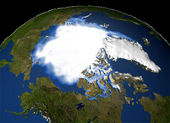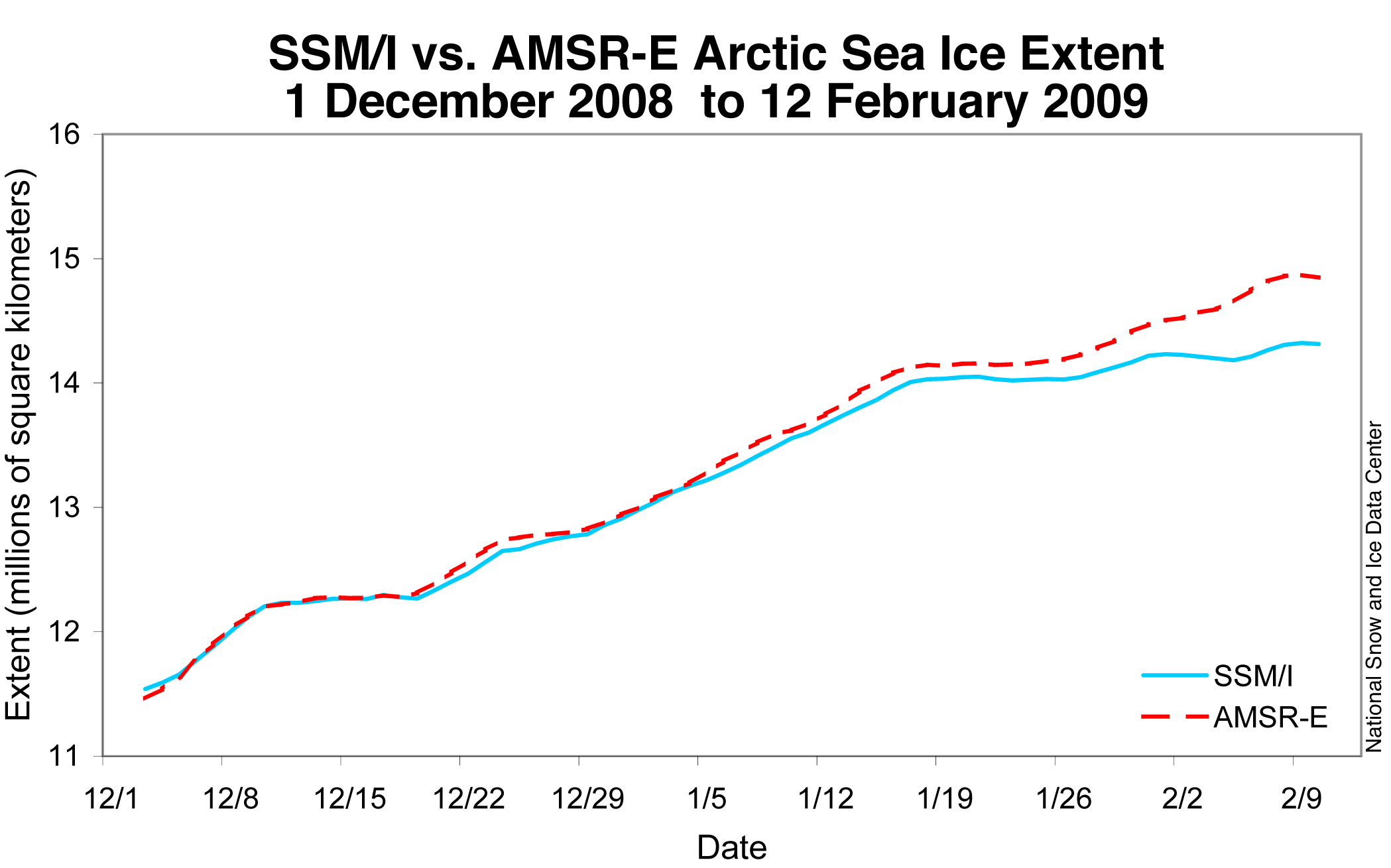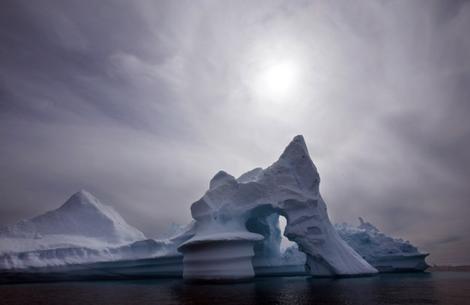As with the NASA Russian temperature debacle last year and the forced recalculation of US surface temperatures for the last century in 2007, the latest problem was discovered after NSIDC received emails from puzzled readers, asking why obviously sea-ice-covered regions were showing up as ice free open ocean. A statement on the NSIDC web site, published February 18, 2009, explains the current faux pas this way:
As some of our readers have already noticed, there was a significant problem with the daily sea ice data images on February 16. The problem arose from a malfunction of the satellite sensor we use for our daily sea ice products. Upon further investigation, we discovered that starting around early January, an error known as sensor drift caused a slowly growing underestimation of Arctic sea ice extent. The underestimation reached approximately 500,000 square kilometers (193,000 square miles) by mid-February. Sensor drift, although infrequent, does occasionally occur and it is one of the things that we account for during quality control measures prior to archiving the data.The problem stemmed from a failure of the sea ice algorithm caused by degradation of one of the sensor channels on the DMSP F15 satellite. Upon further investigation, it was found that data quality had begun to degrade over the month preceding the catastrophic sensor failure. The NSIDC relies on an older, less-reliable method of tracking sea ice extent called SSM/I that does not agree with a newer method called AMSR-E. A comparison of the sensor drift can be seen in the accompanying chart.
This error does not signal a change in the overall trend of sea ice reduction over the past several decades. Rather, it speaks to an all too common occurrence in the climate change debate - scientists getting caught basing dire predictions on bad data. This highlights the danger in accepting at face value the often heard dismissal of anti-global warming arguments because the authors are not "real climate scientists." Given the frequency of this type of data problem, we are forced to conclude that many climate scientists are really poor scientists, rushing to publish results that reinforce their own bias without ensuring the integrity of those results.
Once again we have misleading climate change pronouncements being based on data errors, data errors detected by non-UN, non-IPCC, non-peer-reviewed external observers. Sometimes it is the scientists themselves who discover the errors, as with the non-disappearing ice sheets of Greenland. More often than not, it is outside observers uncovering the errors, casting doubt on the trustworthiness of all science. This is exactly what happens when you base your arguments on "consensus science" and not scientific fact. What is happening to the Arctic ice this year? So far, the sea ice extent is tracking ahead of 2005, 2006, 2007, and 2008, so the predictions of an ice-free north pole might be a bit premature.






Reader Comments
to our Newsletter